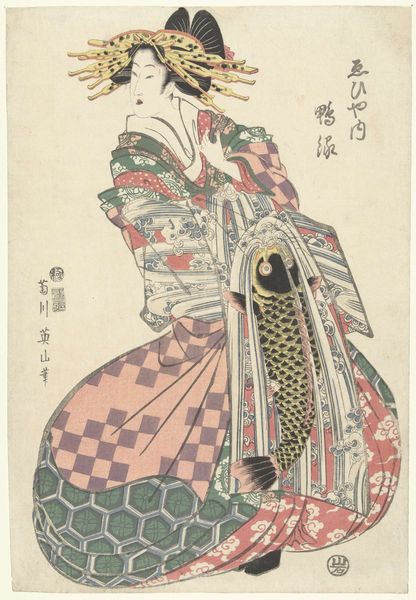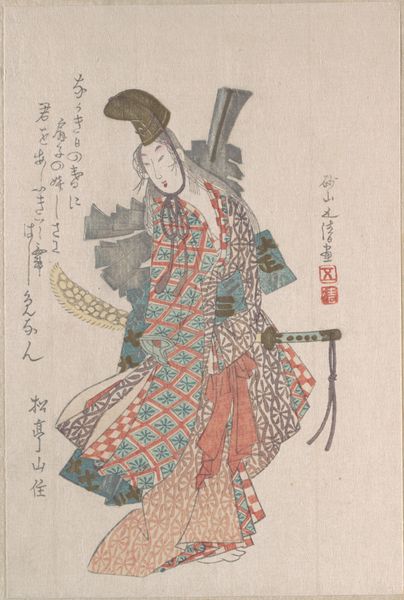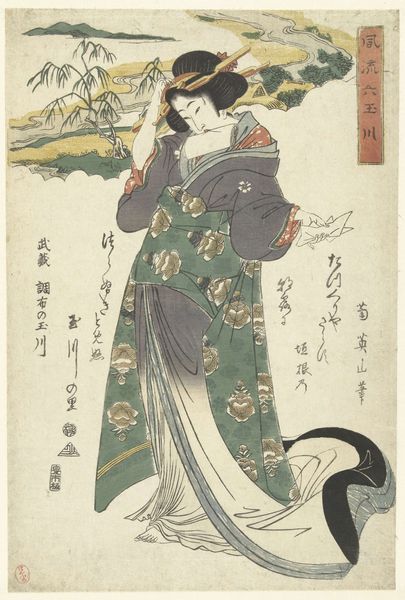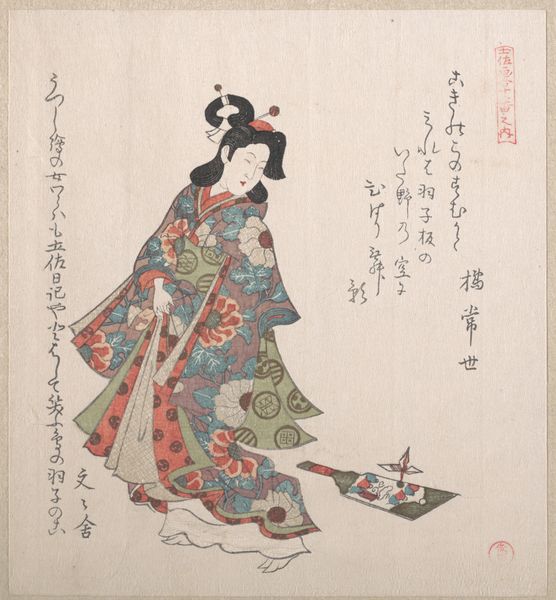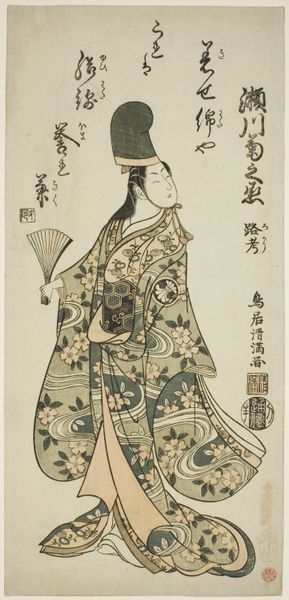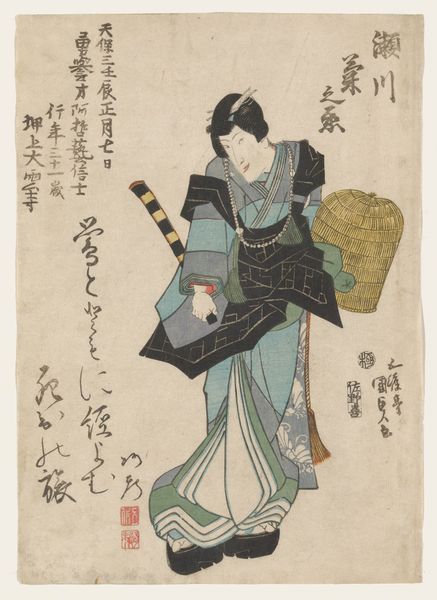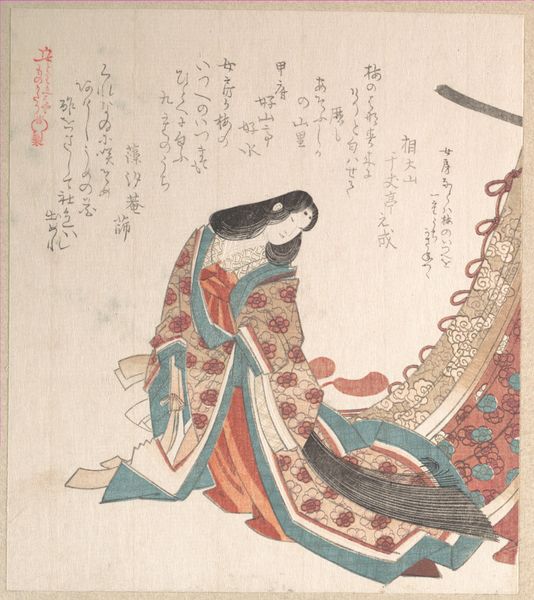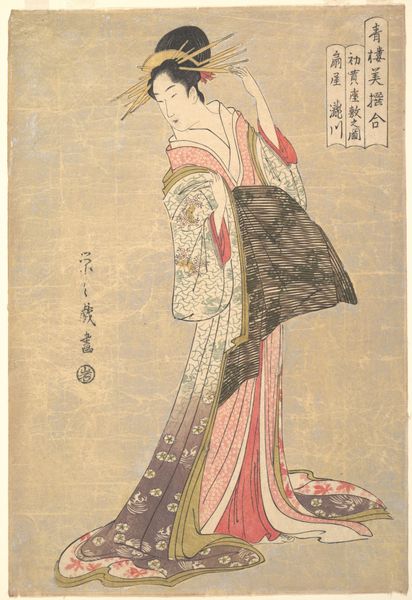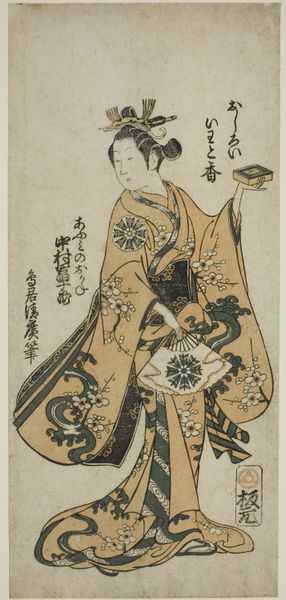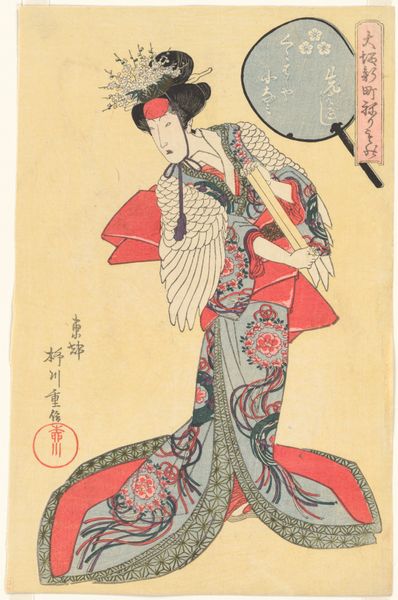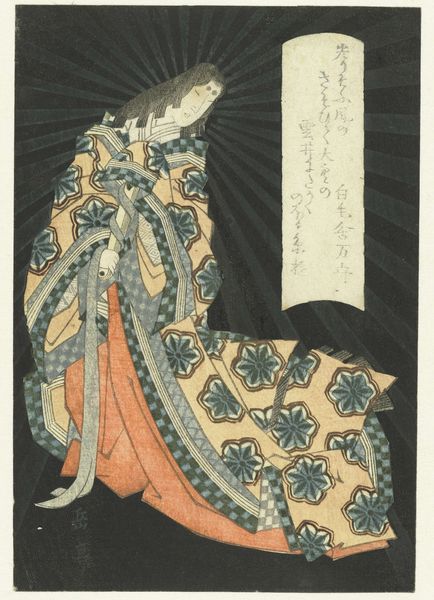
Sotoori-hime (early 5th century), One of the Three Gods of Poetry From the Spring Rain Collection (Harusame shū), vol. 1 1820s
0:00
0:00
print, woodblock-print
#
portrait
# print
#
asian-art
#
ukiyo-e
#
figuration
#
woodblock-print
Dimensions: 8 x 5 3/8 in. (20.3 x 13.7 cm)
Copyright: Public Domain
Editor: Here we have "Sotoori-hime, One of the Three Gods of Poetry" by Yashima Gakutei, a woodblock print dating back to the 1820s. She seems to be deep in thought or perhaps even sorrow, almost overwhelmed by the intricate patterns of her robes. I'm struck by how much detail there is in the clothing; what does this say about her position, or about the culture from which she comes? Curator: Precisely. Look at how this image circulates ideas about femininity and power within the specific context of 19th-century Japan. The "Three Gods of Poetry" were potent cultural figures, but notice how Gakutei's depiction might challenge or reinforce existing social hierarchies through this very controlled medium. Think about the ukiyo-e tradition – how does the relative affordability of prints democratize or conversely, control, who gets to consume idealized images of important cultural figures? Who has access to this image, and what meaning do they take from it? Editor: So, beyond just admiring the aesthetic, you’re pointing to the importance of the print as a vehicle for spreading ideas. And affordability wouldn’t necessarily mean open access to interpretation. What social dynamics might come into play with an image such as this? Curator: Think about the patron-artist relationship, the role of censorship, even the economic forces that fueled the ukiyo-e industry. Were there specific workshops creating these, and for whom? Are there symbolic codes embedded in her robes that signal rank or affiliation? Consider also how the circulation of such imagery intersects with gender roles of the period, shaping the public understanding and valuation of female artists. Editor: It makes me consider how the act of making and distributing art wasn’t just about aesthetics, but about engaging in really complex social dialogues. I’ve always considered art with attention to its aesthetic qualities; thinking more deeply about it in its social and political circumstances is extremely helpful! Curator: Indeed, every artistic decision exists in dialogue with existing norms and power structures, consciously or not. Studying these images in context grants us an invaluable understanding of that world and its influence on our own.
Comments
No comments
Be the first to comment and join the conversation on the ultimate creative platform.

